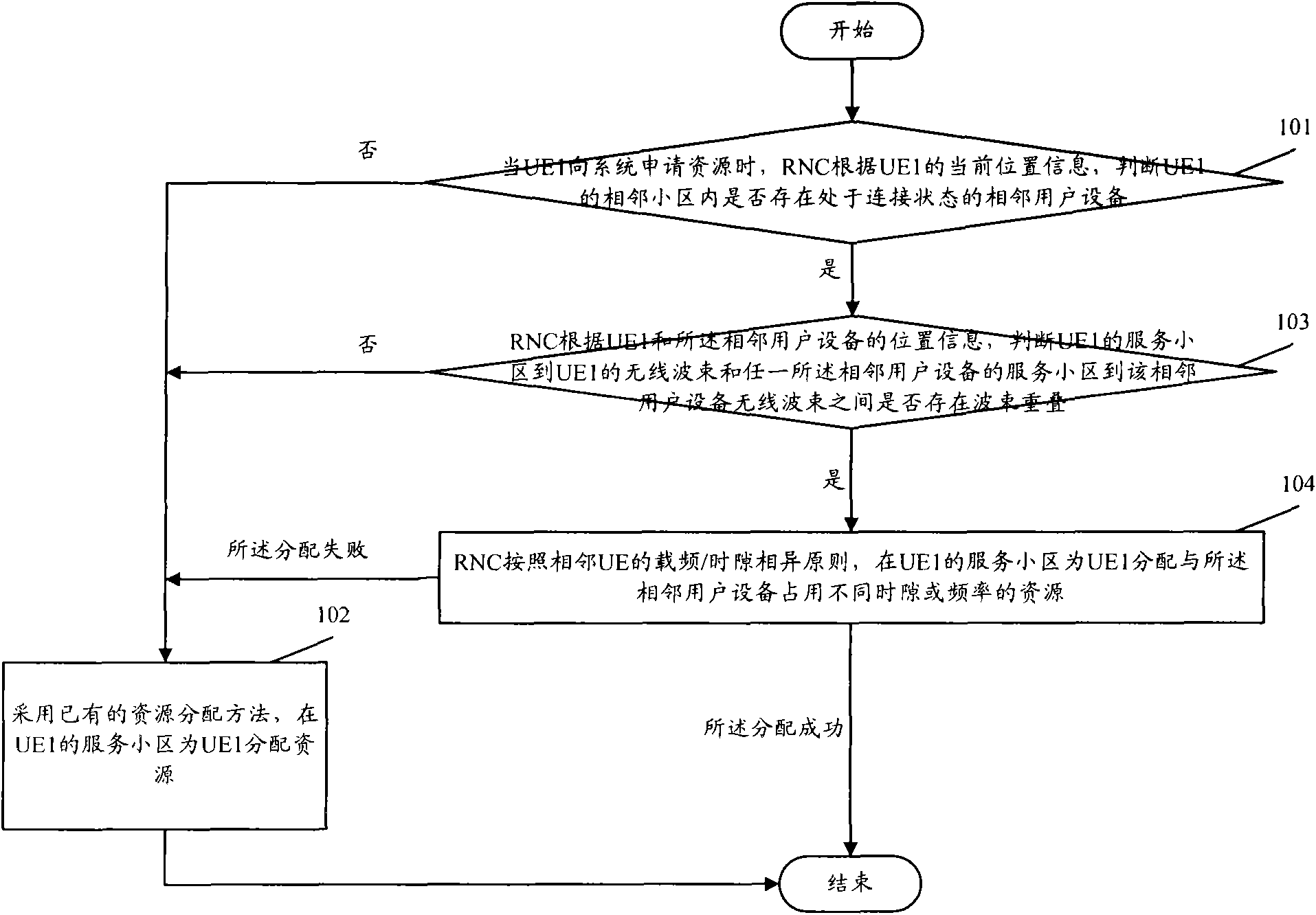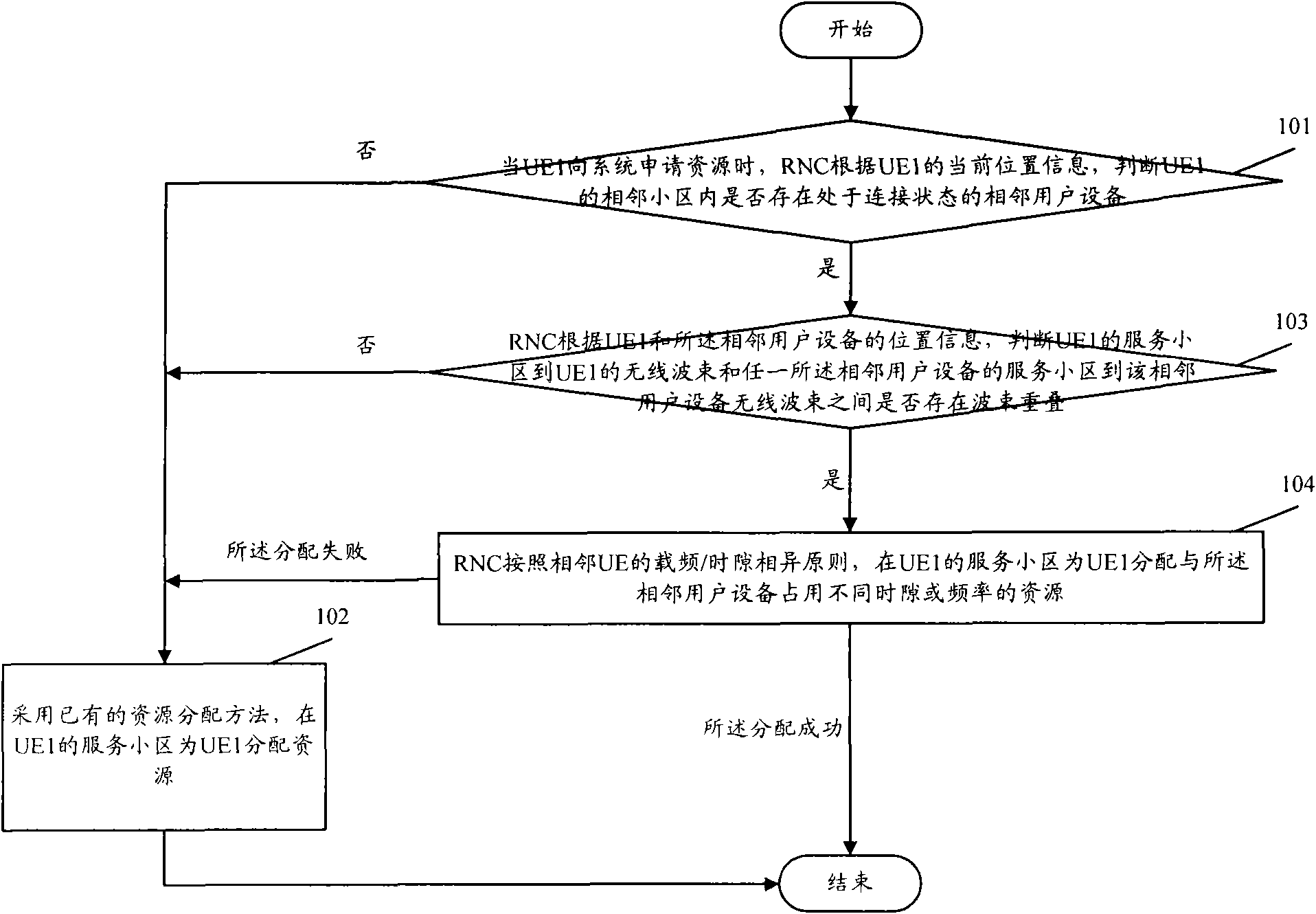Method for reducing same frequency interferences
A technology of same-frequency interference and interference level, applied in electrical components, wireless communication, network planning, etc., can solve the problems of not considering the same-frequency interference from adjacent cells, and cannot reduce the same-frequency interference from adjacent cells, so as to reduce the same-frequency interference effect
- Summary
- Abstract
- Description
- Claims
- Application Information
AI Technical Summary
Problems solved by technology
Method used
Image
Examples
Embodiment 1
[0030] figure 1 It is a flowchart of Embodiment 1 of the present invention, such as figure 1 As shown, Embodiment 1 of the present invention mainly includes:
[0031] Step 101, when UE1 applies for resources from the system, the RNC judges whether there is an adjacent user equipment in the connected state in the adjacent cell of UE1 according to the current location information of UE1, if yes, execute step 103, otherwise, execute step 102 ;
[0032] Here, UE1's application for resources to the system not only refers to the scene where the UE newly accesses the network, but also includes service establishment (or modification, release), handover, and any physical resource adjustment scene.
[0033] In this step, when UE1 applies for resources from the system, if UE1 has a neighboring UE in the connected state in its neighboring cell, it is necessary to consider avoiding the same situation as possible with the neighboring UE during the resource allocation process in the subseq...
PUM
 Login to View More
Login to View More Abstract
Description
Claims
Application Information
 Login to View More
Login to View More - R&D
- Intellectual Property
- Life Sciences
- Materials
- Tech Scout
- Unparalleled Data Quality
- Higher Quality Content
- 60% Fewer Hallucinations
Browse by: Latest US Patents, China's latest patents, Technical Efficacy Thesaurus, Application Domain, Technology Topic, Popular Technical Reports.
© 2025 PatSnap. All rights reserved.Legal|Privacy policy|Modern Slavery Act Transparency Statement|Sitemap|About US| Contact US: help@patsnap.com


